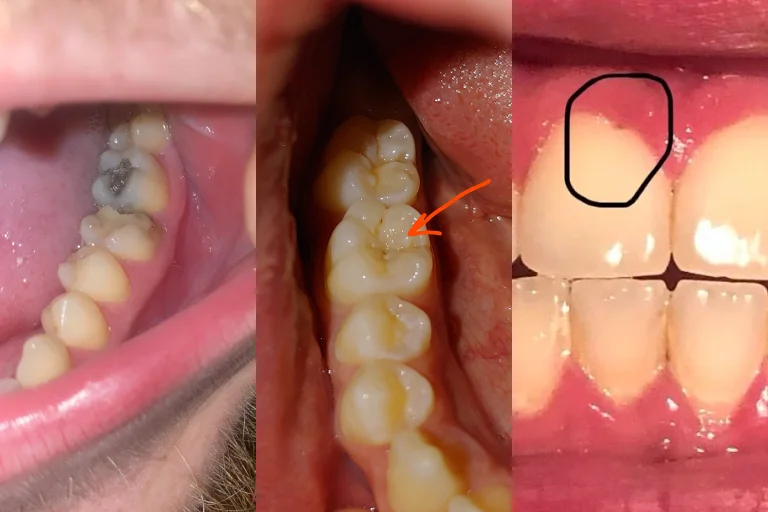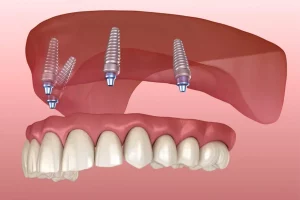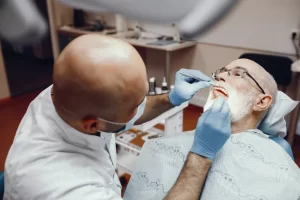Cavity is a widespread condition that damages the teeth by causing a hole in the teeth. Mostly, 90% of the adults might have gone through a cavity, and most of them do not know that they have a cavity until the symptoms become unavoidable. However, visiting a dentist for a cavity will help avoid future complications. Therefore, explore this blog post to know the signs of a cavity and what the pre-cavity looks like, which can help you to identify the cavity and avoid causes.
What Is a Cavity and How It Forms?
A cavity is a small hole or decay that develops in the hard surfaces of your teeth due to prolonged damage caused by acids and bacteria.
Here’s How Cavities are Formed
The process of cavity formation is gradual and occurs in the following stages, which are explained in detail below
Plaque Formation
- Plaque is a sticky, colorless film made of food particles, bacteria, and saliva that constantly forms on your teeth.
- If you consume sugary or starchy foods, the bacteria in plaque break them down into acids.
Acid Attack on Enamel
- These acids erode the enamel (the hard, protective outer layer of the tooth).
- Over time, repeated acid attacks create tiny holes in the enamel, which is the beginning of a cavity.
Progression to Dentin
- If the enamel is compromised, the decay can reach the softer layer beneath, called dentin.
- Dentin is more susceptible to damage, allowing the cavity to grow more rapidly.
Infection of the Pulp
- If untreated, the decay can reach the innermost part of the tooth, the pulp, where nerves and blood vessels are located.
- This can lead to pain, infection, and the need for root canal treatment or tooth extraction.
What Does a Cavity Look Like?
Cavities can vary in appearance depending on their size, location, and severity.
- Color: They range from white spots (early stage) to brown or black as the decay deepens.
- Texture: Cavities often appear as pits, holes, or craters.
- Shiny or dull appearance: Decay can give the tooth a dull finish or a darker stain.
Also, we have explained how does cavity looks at its starting, when it’s small, and How does it look on molar
What Does a Cavity Look Like When It First Starts?
At the very beginning, a cavity is subtle and may not be easily noticeable. Signs include:
- White spots: Caused by mineral loss from enamel.
- Subtle discoloration: A faint yellow or light brown shade may appear.
- No visible hole: Early cavities typically show no significant damage but may cause sensitivity.
What Does a Small Cavity Look Like?
A small cavity often appears as a tiny dark spot or line on the surface of the tooth. In its early stages, it may look like
- White or chalky spots: This shows the sign of enamel demineralization.
- Light brown or yellow discoloration: As decay progresses, the affected place can darken.
- Surface irregularity: The tooth may feel rough or have a slightly sticky texture when touched.
What Does a Cavity Look Like on a Molar?
Molars, being the back teeth, are more prone to cavities due to their grooves and pits. A cavity on a molar might look like:
- Dark spots in grooves: Early cavities often form in the deep crevices.
- Holes or craters: Advanced cavities may create noticeable pits.
- Shadowing: A darker shadow under the enamel indicates deeper decay.
Signs Of Cavity
Here are the 10 most common signs of cavities. They are
- Tooth Sensitivity: Discomfort when eating hot, cold, or sweet foods.
- Toothache: Irregular or continuous pain in the affected tooth.
- Holes: Noticeable pits or holes in the enamel.
- Discoloration: White spots, brown or black stains on the tooth surface.
- Bad Breath: Persistent odor despite regular oral hygiene.
- Pain When Biting: Discomfort or sharp pain while chewing.
- Rough Tooth Surface: A jagged or uneven feel on the affected tooth.
- Swelling or Red Gums: Inflamed or tender gums near the cavity.
- Food Getting Stuck: Frequent trapping of food in the affected area.
- Loose Filling (if present): Previous dental work becoming loose or falling out.
Can a Cavity heal?
No, cavities cannot heal on their own once the enamel is permanently damaged. But when the cavities are in very early stages (when only the enamel is demineralized but not yet broken), cavities can potentially remineralize and stop progressing with proper care.
Here’s how you can take care of the early stage cavity and get rid of them
- Fluoride Treatment: It Strengthens your enamel and promotes remineralization.
- Improved Oral Hygiene: Regular brushing and flossing helps in removing plaque and bacteria.
- Dietary Changes: Reducing sugar intake limits bacteria growth.
- Use of Remineralizing Products: Special toothpaste or mouthwashes that restore minerals to the enamel.
When To Seek Medical Help?
Suppose you need to properly take care of the early stage of the cavity. Then, professional dental treatments such as fillings, crowns, or root canals are required.
So, it’s necessary to have regular dental checkups to identify cavities early and prevent further damage because cavities are one type of condition where the symptoms arise only when they develop.
Takeaway
Cavity is a common condition that affects almost every individual at least once in a lifetime. It can be easily avoided with regular brushing and flossing. To identify them at their early stage, regular dental visits are necessary, and avoiding the development of cavities is necessary to prevent tooth damage and symptoms that disturb our daily lives. Book easy online appointments with Oris Dental Center for regular dental checkups and other dental problems.





